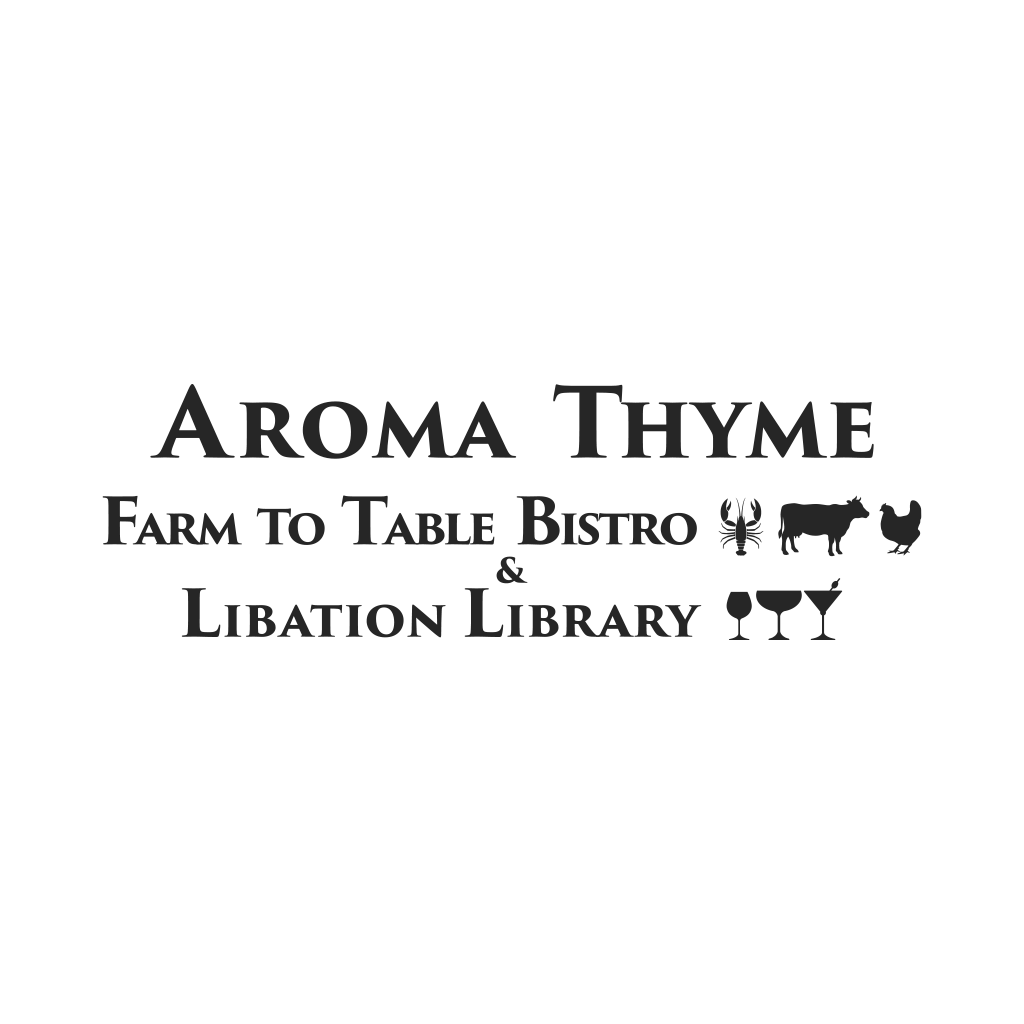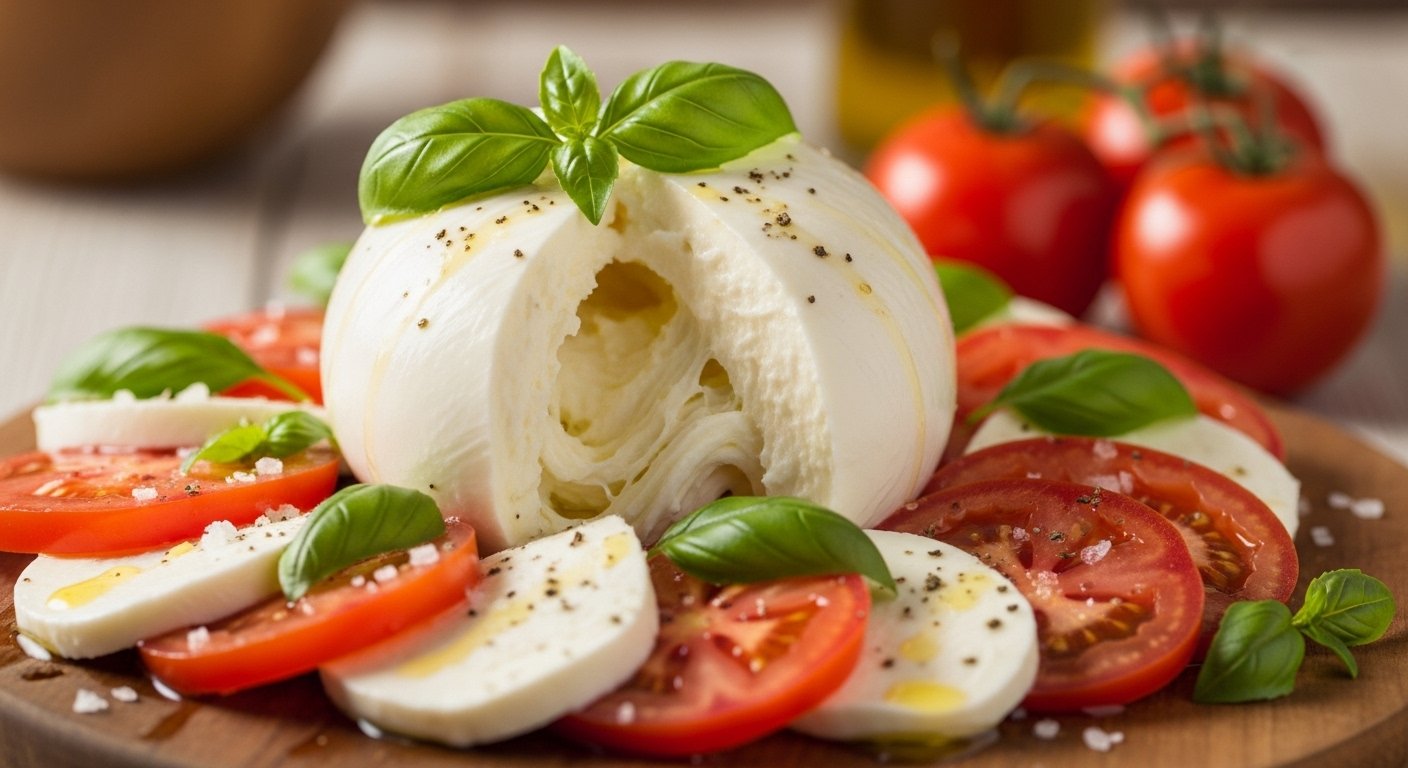More Than Just a Cheese, A Cultural Icon
Few foods inspire the devotion that fresh mozzarella does. Its texture, milky aroma, and creaminess make it a star whether layered in a Caprese, paired with prosciutto, or eaten from the brine. This cheese is more than an ingredient — it’s a cultural icon, rooted in Italian heritage and celebrated worldwide.
I’ll never forget my first taste of true Mozzarella di Bufala Campana in Italy. I was in Campania, where water buffalo graze on pastures that give their milk its richness. A cheesemaker handed me a ball still warm from the brine. The moment I tore into it, the creamy interior spilled onto my fingers, and the flavor was unlike anything I’d ever experienced — tangy, milky, and earthy. It was humbling. That bite redefined cheese for me. It was about tradition, terroir, and the way food connects us to people and place. That foundational moment has shaped the way I cook and source ingredients to this day.
Each type tells a story of place, tradition, and flavor. This includes the prized Mozzarella di Bufala from Campania, the everyday Fior di Latte of Apulia, and fresh mozzarella from American artisans. Understanding the different types of mozzarella helps you choose the right one for your table — whether you’re craving indulgence, versatility, or authenticity.
The Pillars of Italian Mozzarella: Bufala vs. Fior di Latte
Mozzarella di Bufala: Italy’s Crown Jewel
The queen of mozzarellas, Mozzarella di Bufala Campana is made from water buffalo milk in southern Italy, primarily in Campania and Lazio. Protected by DOP (Denominazione di Origine Protetta) status, this cheese can only be produced in designated areas, following old traditions. The Consorzio di Tutela Mozzarella di Bufala Campana DOP tightly regulates every step. This process, from the breed of buffalo to the milk handling, maintains its authenticity.
Buffalo milk is richer in fat and protein than cow’s milk, giving Mozzarella di Bufala its signature creaminess, tang, and earthy depth. The texture is delicate and moist — softer than cow’s milk mozzarella. It’s best enjoyed fresh, the star of a classic Caprese: just ripe tomatoes, basil, olive oil, and a pinch of salt.
Fior di Latte: The Everyday Italian Hero
While Mozzarella di Bufala has the glamour, Fior di Latte is the hero of Italian kitchens. Made from cow’s milk, especially in regions like Apulia, Fior di Latte has a milder flavor and firmer texture than its buffalo counterpart. This is the mozzarella most Italians eat regularly — on antipasto platters, sliced onto sandwiches, or eaten with olive oil and bread. Its milky taste makes it versatile while still artisanal.
As a chef, I often choose Fior di Latte over Bufala when heat is involved. Buffalo mozzarella’s structure can break down too quickly under high heat, releasing moisture that makes pizza soggy or dishes watery. Fior di Latte, with its firmer body, melts beautifully while holding its shape. It’s the mozzarella that balances a robust flavor with practicality in the kitchen.
American Artisanal Mozzarella: A New World of Craftsmanship
In the United States, cheesemakers have embraced the art of producing fresh mozzarella — the closest cousin to Italy’s Fior di Latte. Made from cow’s milk, American fresh mozzarella is typically sold as soft balls stored in brine or whey. While it lacks formal certifications like Italy’s DOP system, many American producers now hand-stretch their mozzarella daily, often using high-quality local milk. The result is a cheese with a milky flavor and springy texture that mirrors the Italian experience.
Over the past two decades, American artisanal cheese has gained global respect, with small dairies in Vermont, California, and Wisconsin leading the way. Some even partner with farms to ensure their milk never travels more than a few miles before it’s transformed into curds.
As a chef, I love American fresh mozzarella for its versatility. It may be slightly firmer than Italian counterparts, which makes it excellent for sandwiches, while still soft enough to shine in a Caprese. Like in Italy, it isn’t meant for shredding on pizzas — it’s meant to be savored fresh: sliced over tomatoes, torn into salads, or drizzled with olive oil.
At its best, American fresh mozzarella offers a taste of Italy with a distinctly American pride in craft. Learning about these types of mozzarella is key to appreciation.
What is Burrata & Stracciatella? A Guide to Mozzarella’s Most Indulgent Forms
When mozzarella gets playful, you get burrata. Born in Apulia, burrata starts as a pouch of fresh mozzarella, then gets filled with stracciatella — a blend of shredded mozzarella curds and cream. The result is pure decadence: cut open a burrata and the creamy filling spills out, ready to be scooped onto bread, roasted vegetables, or prosciutto. Stracciatella, on its own, is equally indulgent. Soft and spoonable, it’s a favorite for spreading on crostini or folding into pasta. Neither burrata nor stracciatella carry DOP status, but their authenticity lies in the traditional Apulian method. Seek out versions made with fresh milk and simple ingredients.
How to Buy the Best: A Chef’s Tips for Spotting All Types of Mozzarella
Decoding Italian Certifications
Italy protects its cheesemaking heritage through strict certifications. The two key designations are:
- Mozzarella di Bufala Campana DOP – Always made from buffalo milk in Campania or Lazio, following centuries-old rules enforced by the Consorzio di Tutela.
- Mozzarella di Gioia del Colle DOP – From Apulia, crafted with local cow’s milk for a delicate, tender bite.
These labels are guarantees of authenticity, geography, and tradition.
What to Look For in the U.S.
In the U.S., there’s no formal equivalent, but there are clues to authenticity. Look for terms like artisan or farmstead, which usually signal small-scale production. The best fresh mozzarella will be:
- Hand-stretched (pasta filata pulled by hand, not machine).
- Packed in brine or whey, never vacuum-sealed in plastic without liquid.
- Sold with a short shelf life (if it lasts a month, it’s not fresh).
As a chef, I always ask one question: “Was it made this week?” If the answer is yes, you’re in good hands.
The Golden Rule of Freshness
Unlike Parmigiano or Pecorino, mozzarella does not age into greatness. Its magic lies in immediacy.
- Best by: 3–5 days after production.
- Avoid: Sour smell, rubbery texture, or yellowing edges.
- Look for: A milky aroma and a moist, springy texture. Press gently — good mozzarella should give slightly, releasing a bead of whey.
The golden rule: the fresher, the better for all types of mozzarella.
How to Store Fresh Mozzarella for the Best Flavor
Always store mozzarella in its brine or whey to maintain moisture and flavor. If it comes in water, keep it submerged, and change the liquid daily if storing beyond two days. Never refrigerate it ice-cold — bring it to room temperature before serving so its creaminess comes alive.
For a deeper dive into the food science of mozzarella storage, see Serious Eats’ guide.
How to Serve Fresh Mozzarella Like an Italian
Understanding the Sizes and Shapes
Mozzarella comes in many forms, each with its own use:
- Fior di Latte – Large, fist-sized balls, perfect for slicing.
- Ovoline – Egg-sized, great for salads.
- Bocconcini – Bite-sized “little balls,” ideal for skewers.
- Ciliegine – Cherry-sized, fun for appetizers and salads.
- Perline – Tiny pearls, delicate for scattering over dishes.
Simple Serving Ideas That Let the Cheese Shine
Fresh mozzarella shines brightest when kept simple:
- Drizzle with extra virgin olive oil and a pinch of sea salt.
- Pair with seasonal tomatoes, roasted peppers, or peaches.
- Tear into warm pasta or grain bowls just before serving.
- Spread across bruschetta with basil and balsamic vinegar.
- Feature in a classic Caprese Salad, the ultimate test of mozzarella’s purity.
And for the perfect pairing, explore pairing with the right Italian wine.
Final Thoughts: A Bridge Between Tradition and Taste
This family of cheeses belongs in every kitchen. It spans the richness of Mozzarella di Bufala, the comfort of Fior di Latte, and the growing craft of American mozzarella. The secret to enjoying all types of mozzarella is simple. Choose it fresh, enjoy it quickly, and let the quality shine.








